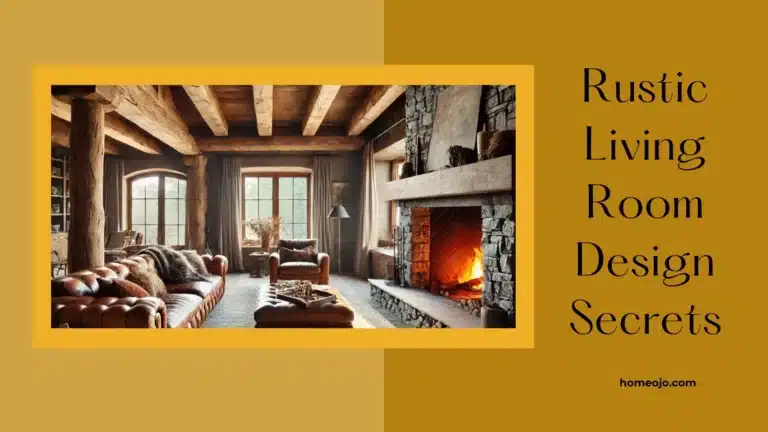Creating a rustic living room is one of the most rewarding ways to infuse warmth and character into your home. The rustic style is all about embracing natural materials, earthy colors and a cozy atmosphere that makes you feel instantly at ease. Whether you’re starting from scratch or looking to update your existing space, this guide will help you transform your living room into a rustic haven that you’ll never want to leave.
What Defines Rustic Style?
Rustic style is all about natural and raw or organic looking space. It uses materials like wood, stone, and metal to create a warm, welcoming feeling. Think of a cabin in the woods or a farmhouse. Rustic style is perfect for those who love the outdoors and appreciate simple, natural beauty.
The Role of Natural Materials
Natural materials are the heart and soul of rustic design. Think of rich wooden beams, stone fireplaces and iron accents that not only add character but also create a serene and grounded environment. These elements bring the outdoors inside, helping to establish a peaceful retreat right in your living room.
1. Start with a Neutral Color Palette
A neutral color palette is the foundation of any rustic living room. Colors like beige, brown, gray, and white dominate these spaces, creating a calm and relaxing atmosphere perfect for unwinding after a long day.
Choosing the Right Shades
When selecting colors, opt for muted tones that mimic the shades found in nature. For example, a soft beige for the walls can be complemented by darker brown accents in furniture or decor. This combination creates depth and visual interest without overwhelming the senses.
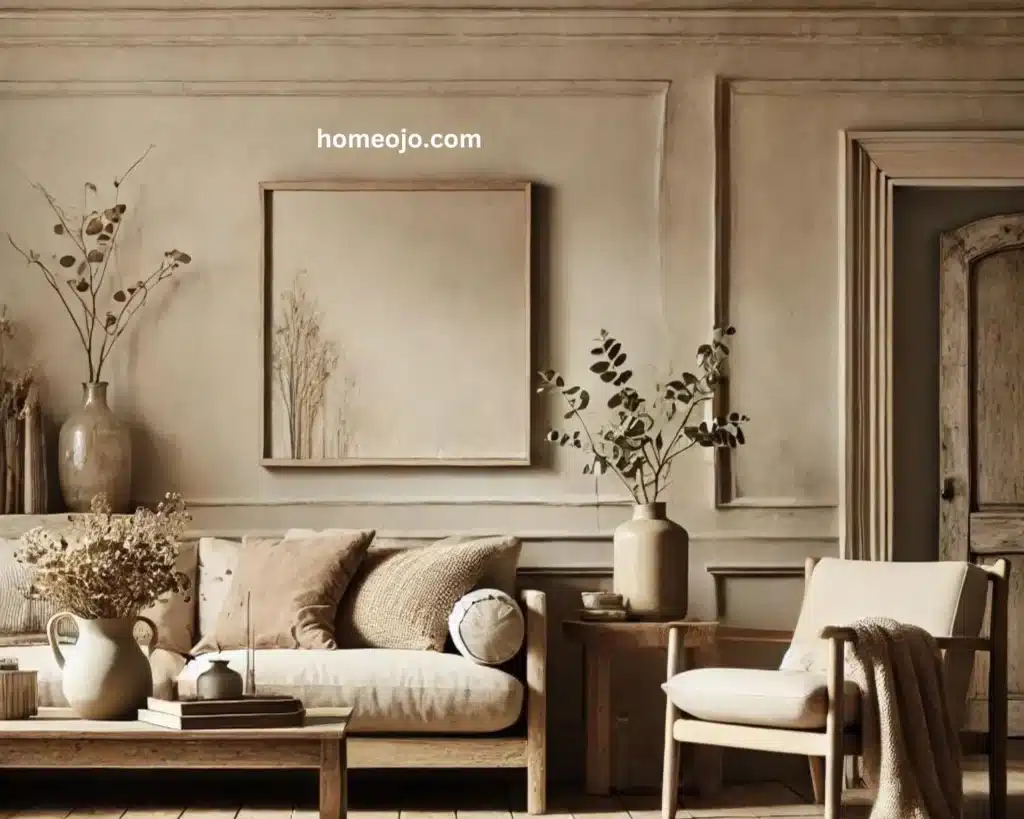
2. Incorporate Wooden Elements
Wood is a key component of any rustic living room. Whether it is through furniture, flooring, or decorative elements, incorporating wood will instantly bring warmth to your space.
Reclaimed Wood for Authenticity
For a truly rustic feel, consider using reclaimed wood. This not only adds character and history to your living room but also serves as an environmentally friendly option. A reclaimed wood coffee table or shelving unit can be a great focal point.
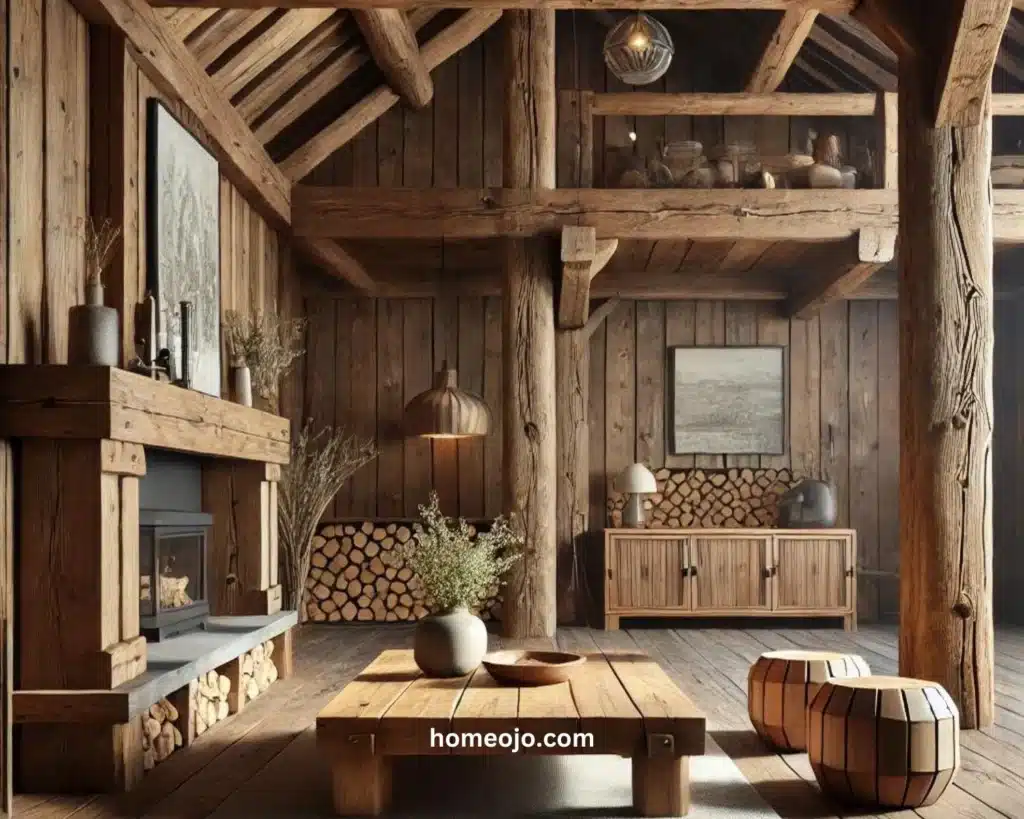
3. Add Cozy Textiles
One of the best ways to enhance the coziness of a rustic living room is through textiles. Think chunky knit throws, woolen blankets and plush pillows that invite you to sink in and relax.
Mixing and Matching Textures
Don’t be afraid to mix different textures. Combine a leather sofa with a soft fur throw or a cotton rug with a woven basket for storage. This creates a layered and inviting look that’s perfect for a rustic space.
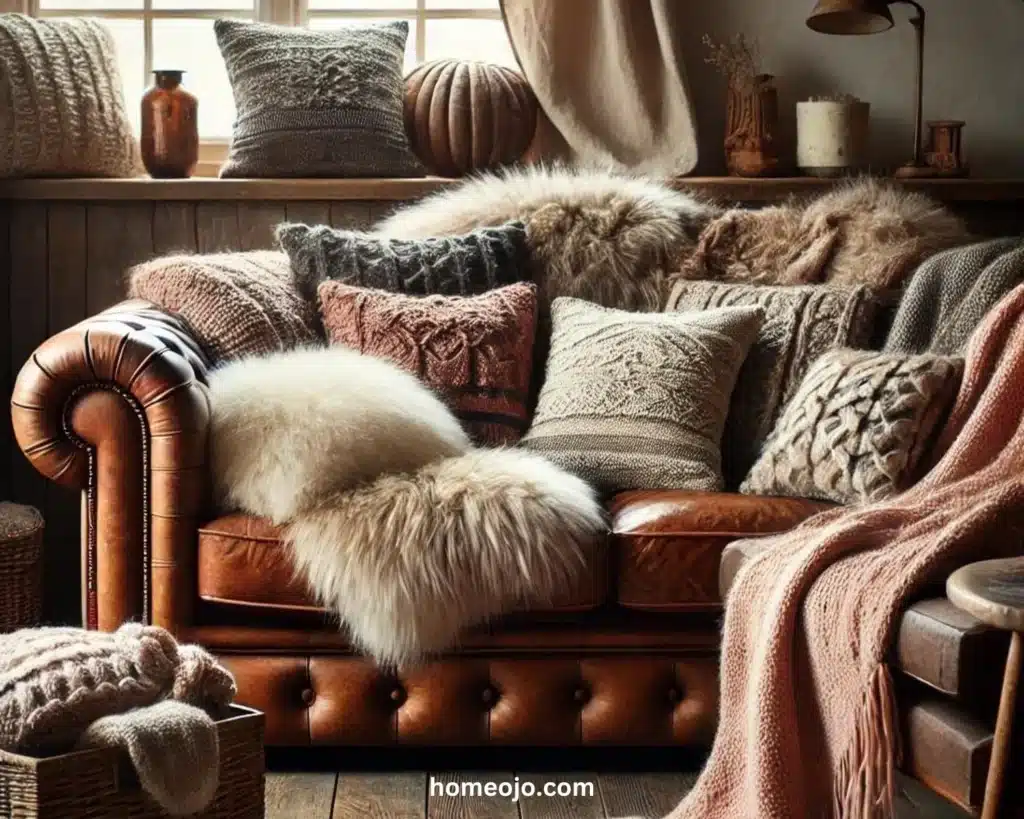
4. Stone Accents for a Natural Touch
Stone elements, like a fireplace or stone-clad wall, add a rugged and earthy feel to your rustic living room. If a full stone wall isn’t feasible, consider using stone in smaller areas like the hearth or mantel.
Creating a Focal Point
A stone fireplace can serve as the perfect focal point in your living room. It draws the eye and adds a sense of permanence and strength to the space.
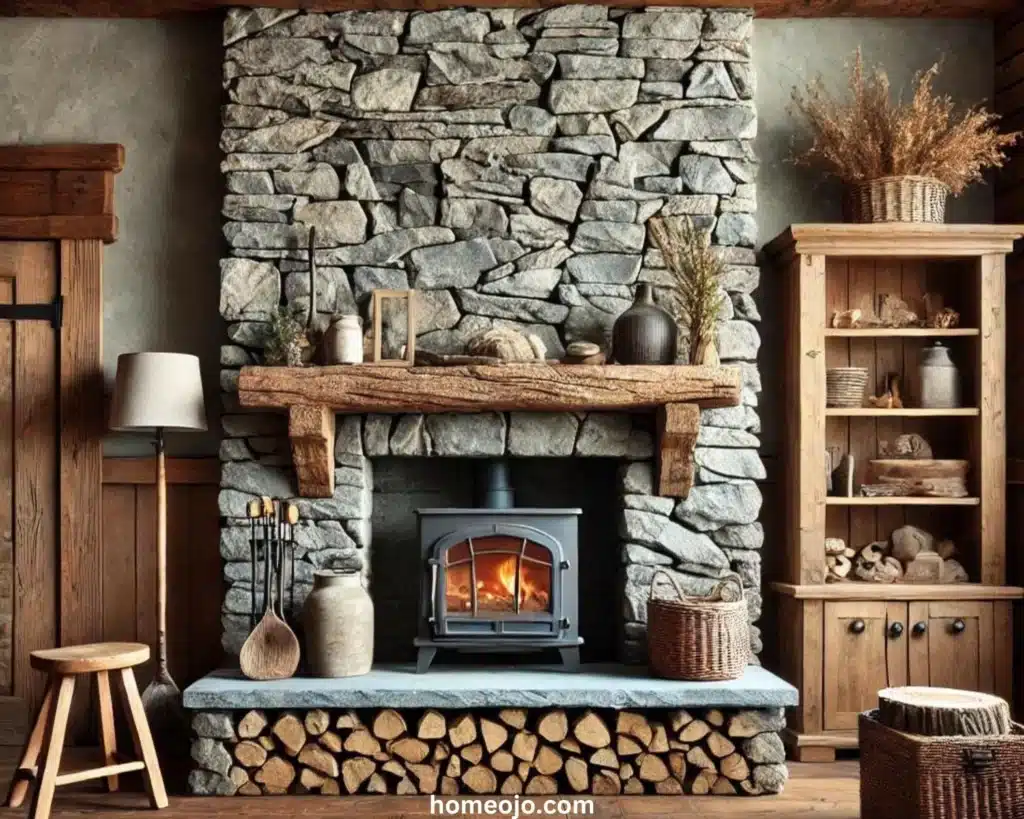
5. Incorporate Vintage and Antique Pieces
Rustic design often includes elements that have a story to tell. Incorporating vintage or antique furniture and decor can bring a sense of history and authenticity to your space.
Finding the Perfect Pieces
Look for pieces that have a worn, lived-in feel. This could be an old wooden rocking chair, a vintage trunk used as a coffee table, or antique metal lanterns.
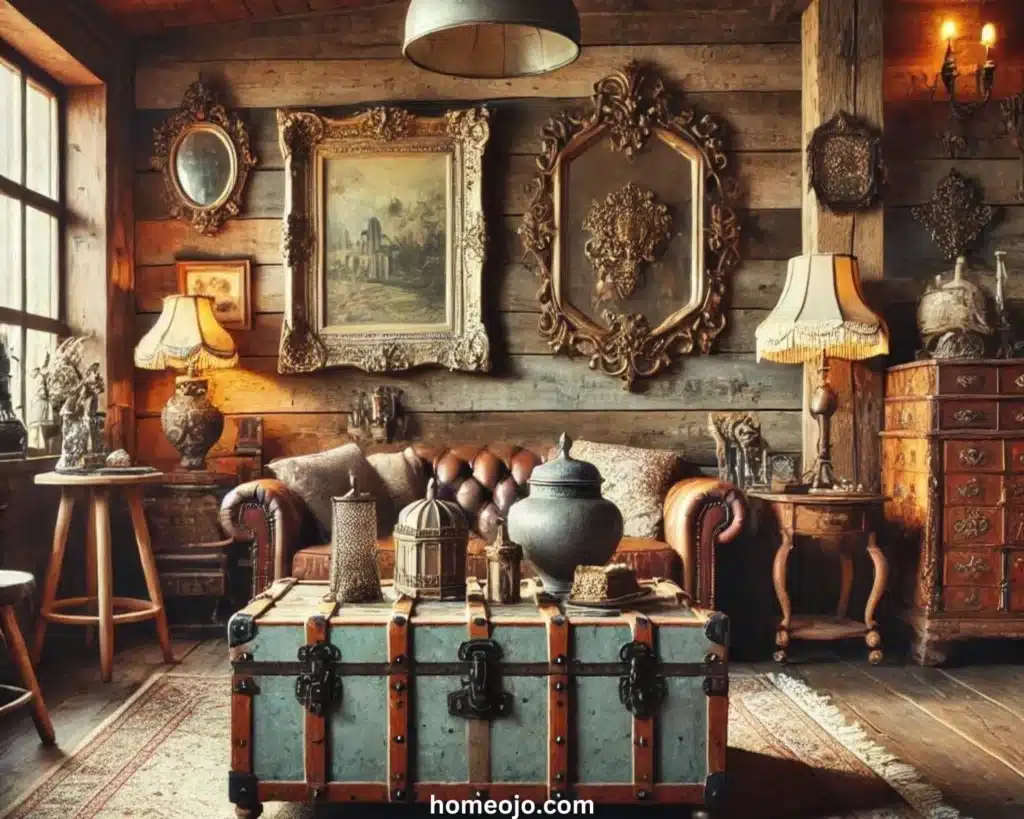
6. Bring in Natural Light
Natural light plays a crucial role in rustic design. It highlights the natural materials in your space and adds warmth to the overall ambiance. Large windows, if available, should be left unadorned or minimally covered to let in as much light as possible.
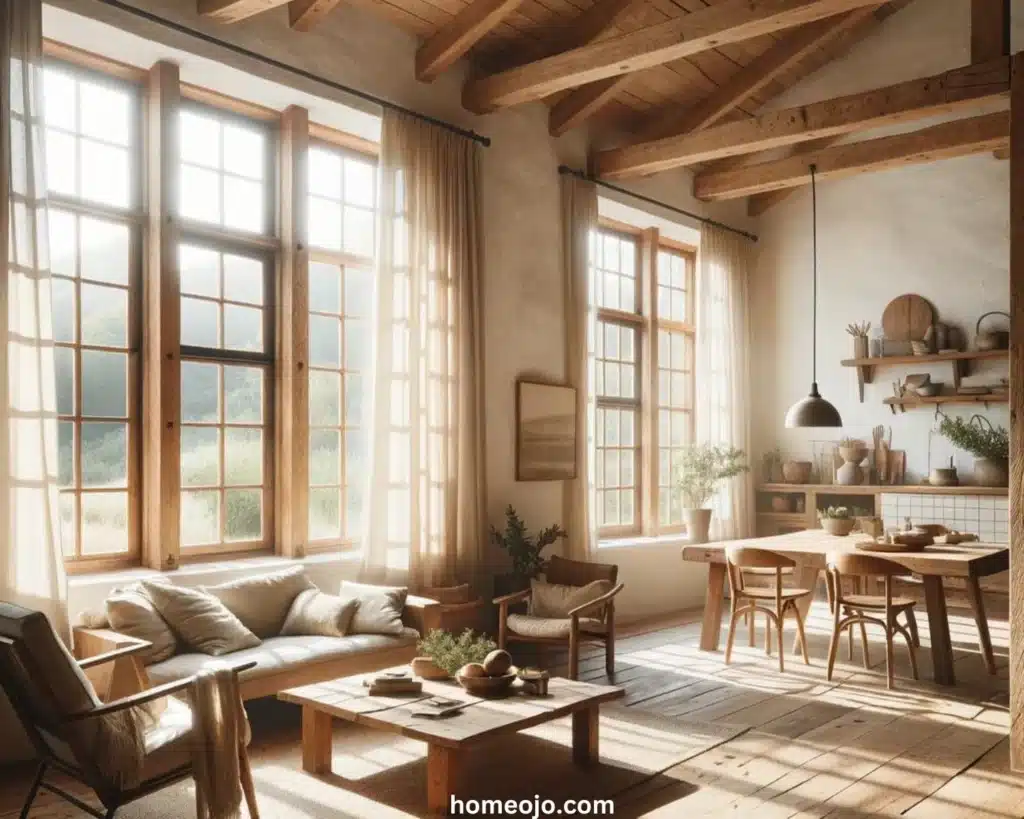
7. Layer with Rugs and Carpets
Rugs are an essential component of a rustic living room. They add warmth, comfort and style while also defining different areas within the room. Opt for rugs made from natural fibers like wool or jute.
Choosing the Right Rug
When selecting a rug, look for patterns that are subtle and earthy. Stripes, plaids, or simple geometric designs work well in rustic spaces. The key is to keep it understated and aligned with the natural theme.
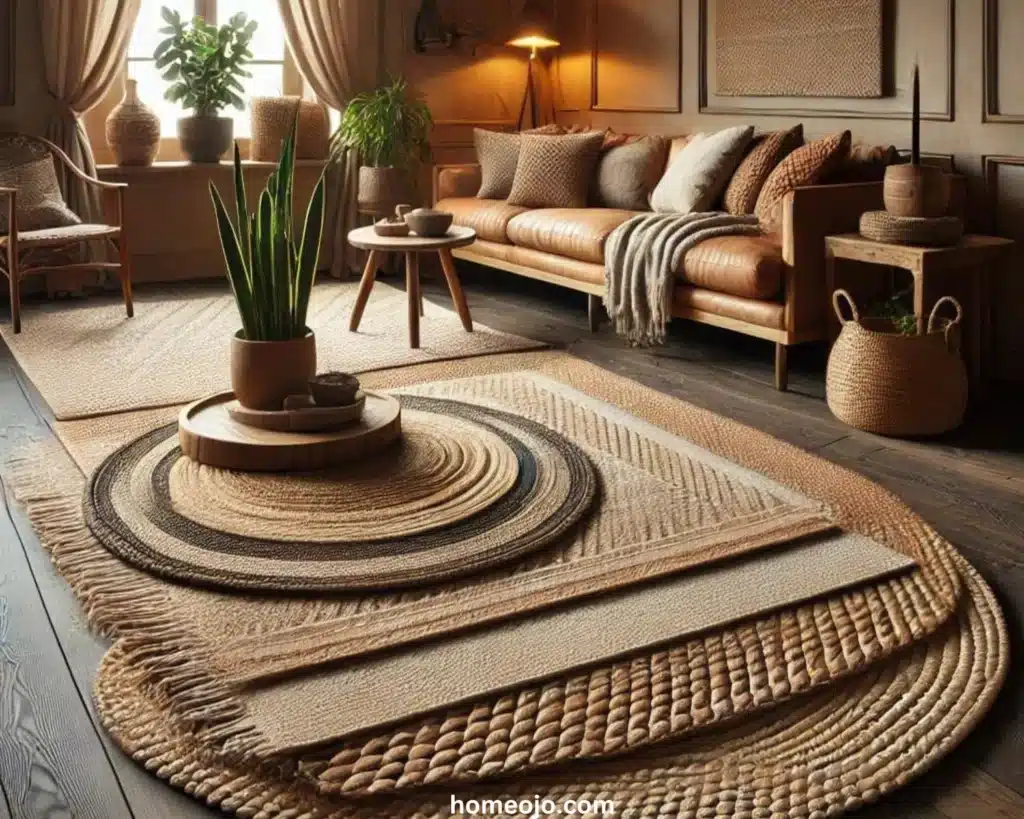
8. Add Personal Touches with Art and Decor
Personalizing your space with art and decor is essential to making it feel like home. In a rustic living room, artwork that depicts nature scenes, wildlife, or landscapes fits particularly well.
Using Rustic Frames
Frames made from reclaimed wood or metal can enhance the rustic vibe. They add texture and interest to your walls while ensuring that the artwork remains cohesive with the rest of your design.

9. Use Greenery to Liven Up the Space
Bringing a touch of the outdoors inside is a great way to add life to your rustic living room. Simple plants like succulents, ferns, or even small potted trees can introduce a fresh, natural element.
Choosing the Right Plants
Opt for plants that are easy to maintain and fit well with the rustic aesthetic. Place them in clay pots or wooden planters to keep the natural theme going.
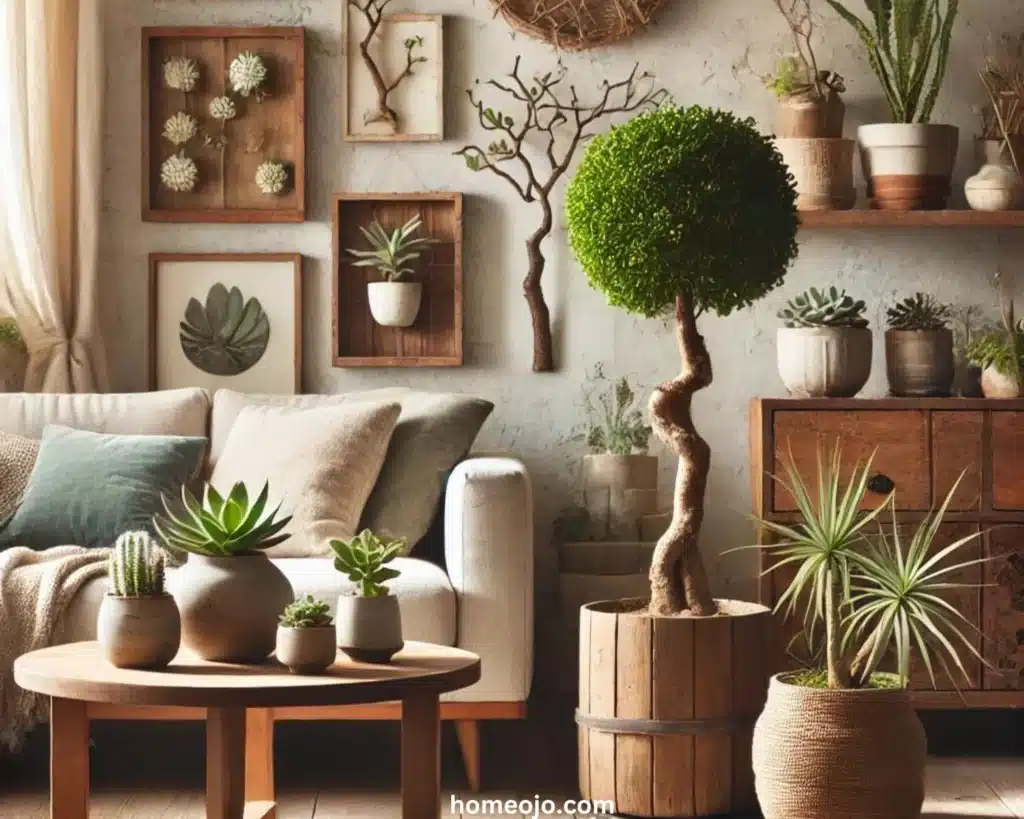
10. Create a Warm and Inviting Lighting Scheme
Lighting is key to setting the mood in a rustic living room. Avoid harsh overhead lights and instead opt for softer, ambient lighting. Use floor lamps, table lamps and wall sconces to create a warm, inviting glow.
Choosing Rustic Lighting Fixtures
Look for fixtures made from materials like iron, wood, or glass. Edison bulbs are a popular choice for rustic spaces, as they provide a warm, vintage-inspired light.
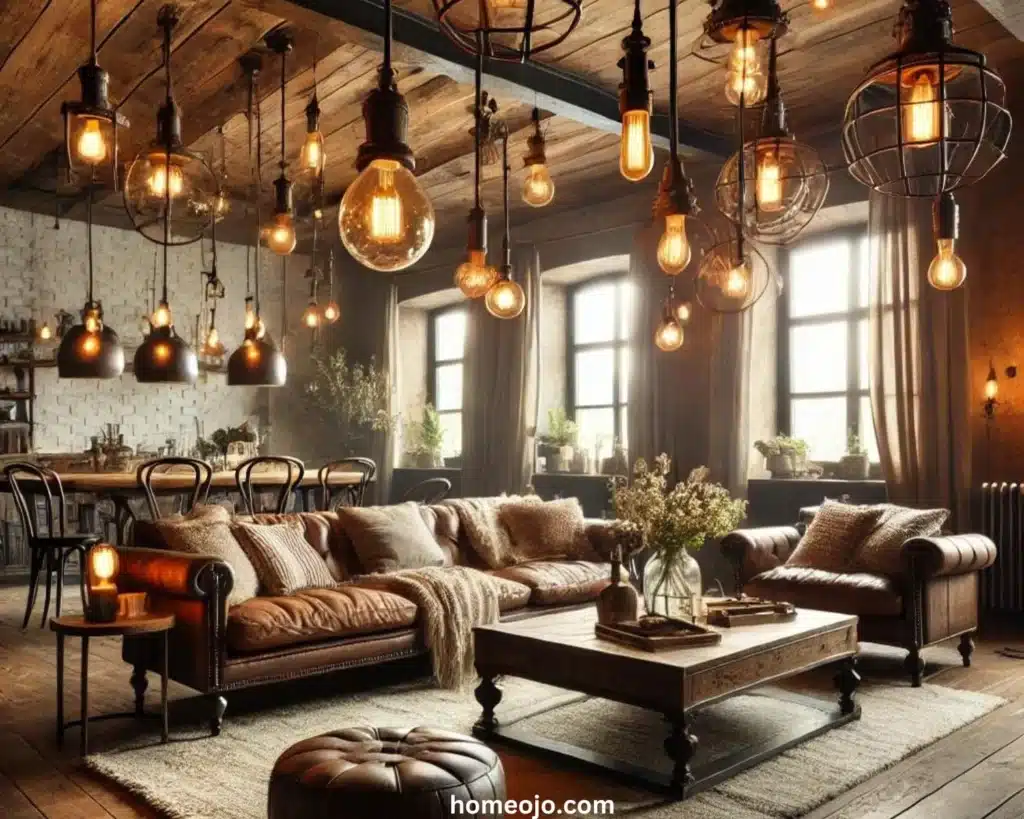
11. Incorporate Natural Elements in Decor
Natural elements like stones, branches and dried flowers can be used as decor in a rustic living room. These items can be displayed in simple glass jars or woven baskets to add texture and interest.
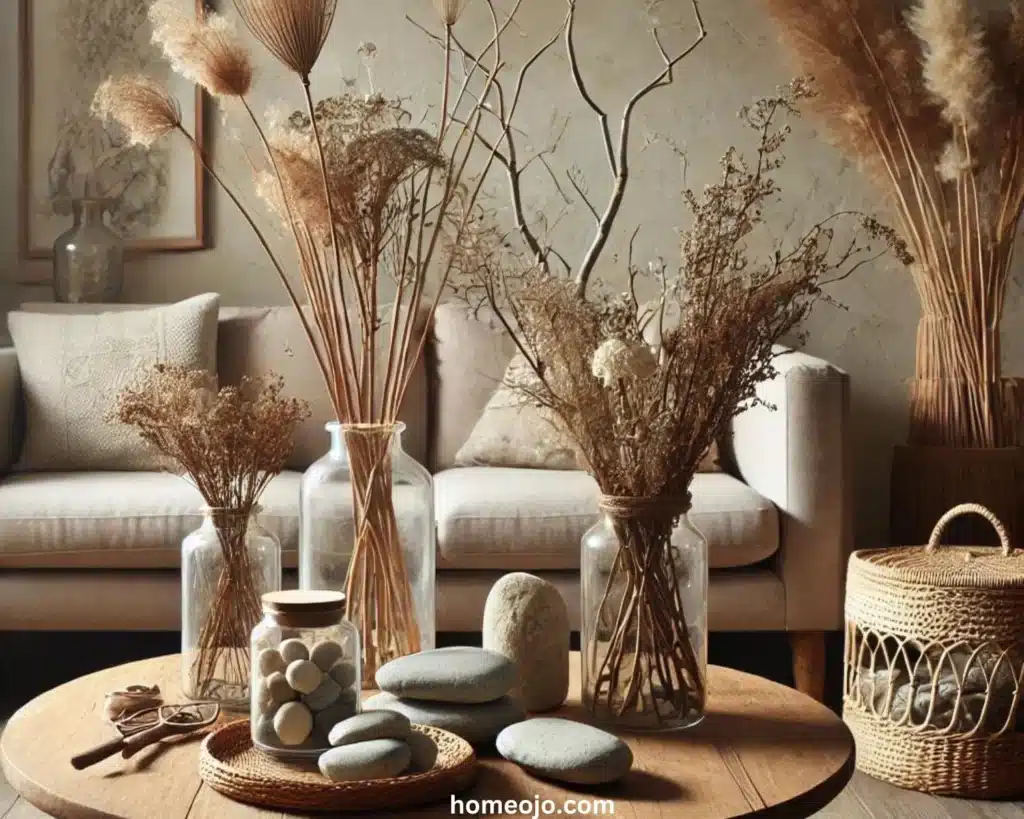
12. Opt for Comfortable and Functional Furniture
In a rustic living room, furniture should be both comfortable and functional. Choose pieces that are sturdy and well-made, with a focus on natural materials like wood and leather.
Finding the Perfect Sofa
A large, comfortable sofa is a must in any living room. In a rustic setting, opt for a sofa with a simple design and natural fabric. Leather is a great choice, as it’s durable and adds a touch of luxury.
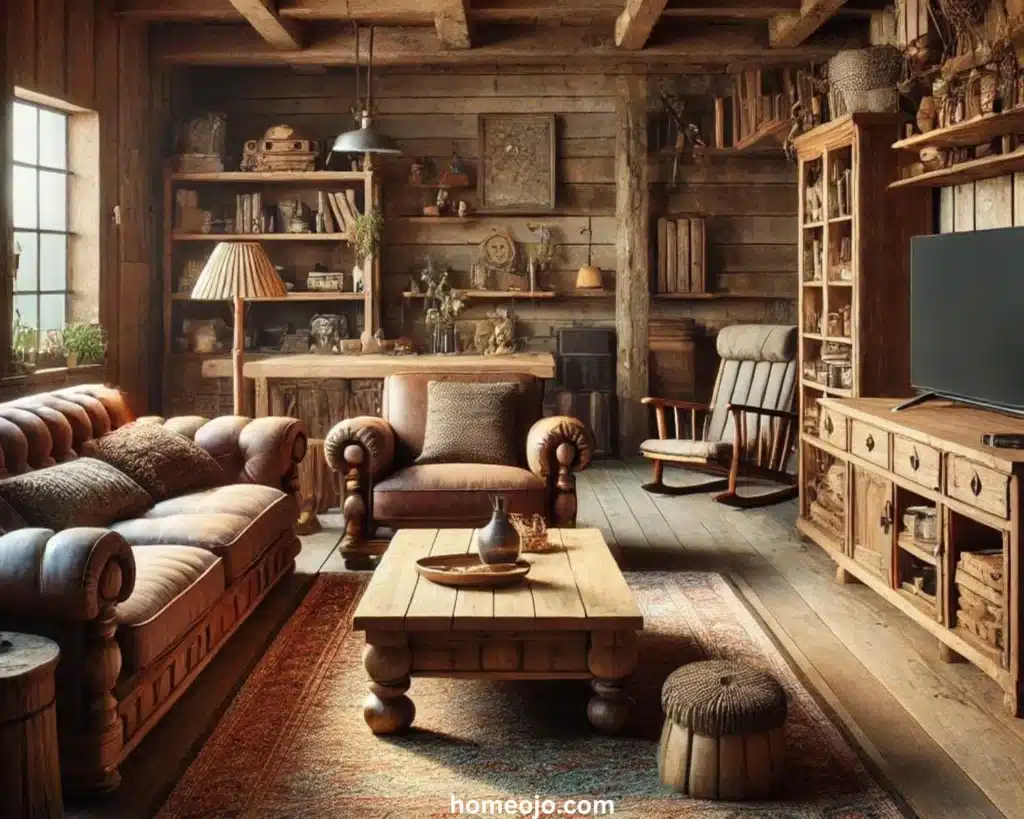
13. Add Storage with Style
Storage is essential in any living room, but in a rustic space, it should also add to the overall aesthetic. Consider using vintage trunks, wooden chests, or woven baskets for storage.

14. Finish with Thoughtful Details
The final touches are what make a rustic living room feel complete. Think about adding candles, books, or small trinkets that reflect your personal style and interests.
FAQs
What is rustic style in interior design?
Rustic style uses natural materials like wood and stone, with a focus on creating a cozy, warm atmosphere.
How can I make my living room look rustic?
Use wood furniture, earthy colors, natural decor like plants and stone accents.
What colors are best for a rustic living room?
Neutral tones like beige, brown and gray work well for a rustic living room.
What type of furniture suits a rustic living room?
Wooden, leather and vintage pieces are ideal for a rustic living room.
How can I add warmth to my rustic living room?
Add cozy textiles like woolen blankets, soft pillows and rugs to make the room feel warmer.
Is rustic style expensive to achieve?
Not necessarily. You can use reclaimed wood and thrifted items to create a rustic look on a budget.
Through my lens
Building a rustic living room was a fulfilling experience for me. It was fun to choose natural materials like stone, wood and it was great to see the room turn into a warm, cozy haven. From picking out the right colors to adding vintage touches, the process took creativity and care. In the end, making this rustic living room wasn’t just about planning the layout; it was also about making a space that feels warm and welcoming.


